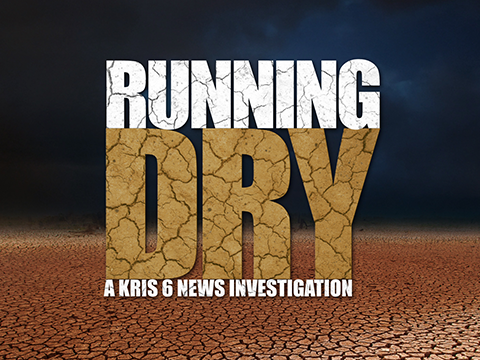CORPUS CHRISTI, Texas — In a world where texts, emails and direct messages reign supreme, the thought of sending a message in a bottle feels like something of a bygone era, found only in the pages of a Robinson Crusoe-like storybook. Some, however, still send messages into the ocean in the hopes of connecting and getting a response back.
The Mission-Aransas National Estuarine Research Reserve, or Mission-Aransas NEER, is a nonprofit and one of 29 reserves in the U.S. that serves as a “living laboratory” where scientists can conduct research and educate people on their findings.
The Mission-Aransas Reserve’s mission is to, “improve knowledge of Texas coastal zone ecosystems structure and function, promote understanding of coastal ecosystems by diverse audiences, and promote public appreciation and support for stewardship of coastal resources.”
The organization achieves this by conducting weekly beach surveys around Port Aransas, checking in on local shorebirds and turtle nesting spots. They also put together a series of social media posts on YouTube and Facebook on the different items that have washed up on shore, including the bottled messages.
“Tony Amos, a Research Fellow here at UTMSI, started the surveys back in the late 1970s,” Jace Tunnell, director of the Mission-Aransas Reserve said. “He found many messages in a bottle over the years until he passed away in 2017. A few others and I here at UTMSI took over the surveys in 2017, and I've personally found around 25 messages in a bottle. (Its) always exciting to see what the message is inside.”
According to Tunnell, the central coast of Texas, including Padre Island National Seashore, accumulates 10 times the number of marine debris on the beaches because of a natural phenomenon called a loop current.
This current circles around the Yucatan Peninsula of Mexico and over to Florida's Gulf Stream, creating eddies that push debris from all over the world towards Texas shorelines, causing debris from places like the Caribbean, Brazil, West Africa, and Mexico to wash up.
One of the messages found by Tunnell and his team even came as far as Jamaica.
“Most (of the messages) are in glass wine bottles, but some are in plastic bottles. Some messages are very detailed, while others are more of a joke, like one just said "HELP",” Tunnel said. “My favorite ones are the ones in green wine bottles with old looking corks and contain a dollar bill in them. The money is supposed to pay for postage to write the message in a bottle sender back.”
Other items that are found on the beach, like nautical equipment, statues and fishing gear, are kept and sold in an annual auction to help raise money for the Amos Rehabilitation Keep (ARK), a rehab center for sea turtles and birds.
To see what other messages might appear on the shores of PINS, or to see what work the Mission-Aransas Reserve does, visit their website or Facebook page.
For the latest local news updates click here, or download the KRIS 6 News App.



